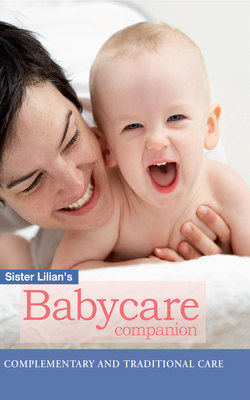Читать книгу Sister Lilian’s Babycare Companion: Complimentary and traditional care - Lilian Paramor - Страница 84
WHAT TO EXPECT
ОглавлениеYou will experience all the same body and mind changes as a woman who has carried her baby to term, although, if you gave birth vaginally, you might have a quicker recovery to the perineal area. More preterm infants are delivered by Caesarean section so, if this is the case for you, you will experience the effects of major surgery as well.
It is quite normal to feel very alone at this time, as if no one else can really understand what you are going through. It is vitally important that you become actively involved with your child’s care from the outset, if your health allows. The emergency nature of extreme prematurity (from 20 to 34 weeks) keeps medical and nursing staff so busy that they might forget what you are experiencing. Many doctors and nurses, however, are very empathetic at this time, so do not hesitate to ask probing questions about every facet of your baby’s care and prognosis for recovery.
Nowadays there is also an initiative called ‘kangaroo care’ – actually as old as the hills – in which mothers are encouraged, under certain circumstances, to secure their babies, skin to skin, to their chests. These babies grow faster, have fewer illnesses and are ready to be discharged from hospital far sooner.
One of the first things you are likely to experience is dismay at the number of ‘pipes’ to which your baby is attached. Each one of these will be serving a life-saving function, in much the same way as the umbilical cord during the pregnancy.
These pipes are likely to include one or more of the following:
•An intravenous infusion drip, usually inserted into a blood vessel in the head, which is more easily accessed than those in the limbs. The purpose of the drip is to administer fluid, nourishment in the form of essential nutrients and medication to your child, so do not feel intimidated. It might be more awkward to hold your baby, but think of it as one of the most important allies you have in the struggle for your child’s health. The drip might well have to be renewed from time to time, as the site of insertion, or the blood vessel into which it has been introduced, might require it.
•Your baby might be on a ventilator to help him breathe. You might find this one of the more frightening aspects, and picking up your baby will usually not be possible, but remember that this is a most important tube, giving your baby the breath of life.
•Electrodes will be attached to your baby’s chest to monitor his heart rate and breathing.
•If your baby can be fed milk, a tube might protrude from the nose, secured by plaster. It goes via the nasal passage and back of the throat to the stomach. Many premature babies are not yet strong enough to suck, and would use up valuable energy resources in trying to do so. In time this will change and they will gradually be offered more by breast or bottle and less by gastric tube.
The beeping of monitors might be rather intimidating initially but will soon become familiar to you. Sometimes the alarms go off accidentally, or simply as a warning for the personnel to check one aspect or another, so do not be too frightened if you are present when this happens. Ask which ones register which functions, as this will lessen the fear you might feel.
The incubator in which your baby is likely to be kept serves various functions: it might be an open unit, as is usually the case in the high-care stage; or a closed, more conventional-looking incubator. These ensure a practical working area for the staff and a controlled temperature and oxygen environment for your baby. The incubator is the replacement for the womb, as it were, and you should concentrate on this aspect rather than seeing it as separating you from your baby. You will still be able to touch and stroke your infant through various ‘portholes’.
